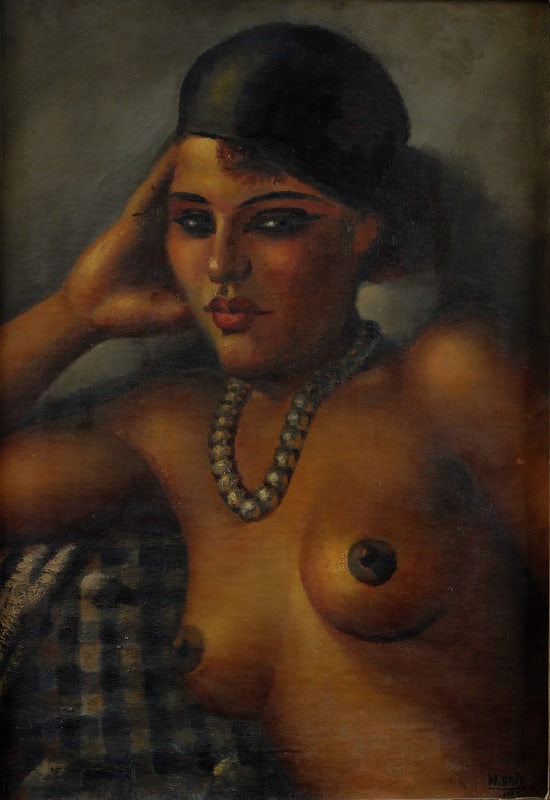Said’s oeuvre undeniably paved the way for a national identity that could be rooted in Modern Egyptian art. He stands, according to Safarkhan founder Sherwet Shafei, as Egypt's most significant Modernist pioneer.
Born in Alexandria on April 8, 1897, to an aristocratic family, he was the son of former Egyptian Prime Minister Mohamed Said Pacha (1863-1928) and the uncle of Queen Farida of Egypt (1921-1988). Said’s Father paved the way for his son to receive the best possible education at the time. Said studied law at the French School of Law Cairo.
Mahmoud Said showed a love for art early on in his life. He was tutored by Mrs. Casonato, an Italian artist who lived in Alexandria and then later began studying art with Antonio Zanieri in his studio, along with some of his friends like Ahmed Rasem and Cherif Sabry. The turning point in Said’s career as an artist derived from his visits to the art museums in Europe from 1919 to 1921. During this period he studied art at La Grande Chaumiere in Paris.
In 1922 he was appointed judge in Mansoura, however, by 1947 Mahmoud Said decided to give up his post as a judge to pursue his artistic endeavours. Mahmoud Said went through a variety of different artistic periods throughout his career. He began as an impressionist, with his works recalling the style of Monet and Pissaro. His second phase, the blue period showcased a poetic inclination rather than a constructivist one. During his Italian Period, Said discovered the Italian Primitives Carpaccio and Giovanni Bellinii, rendering a sense of luminosity in his work with the use of en enamel-like substance, a technique used by Flemish artists. Said’s last period, as reflected in his works Invitation au Voyage and La Promenade, were marked by a predominance of greens and browns and a greater tendency toward reasoning, rather than emotion.
Said’s oeuvre undeniably paved the way for a national identity that could be rooted in Modern Egyptian art. Said succeeded at establishing his own unique style, fused by a combination of European influence and the life and culture surrounding him in his native land. He stands, according to Safarkhan founder Sherwet Shafei, as Egypt's most significant Modernist pioneer. In 1951, Said exhibited the works of thirty years in Cairo, a seminal collection of 145 paintings, which stood as a testament to his defining legacy as the veritable progenitor of Modern Egyptian painting. In 1937, he exhibited in the Rockefeller Center, New York and Paris, as well as in the Biennales of Venice in 1938, 1948, 1950, and 1952.

